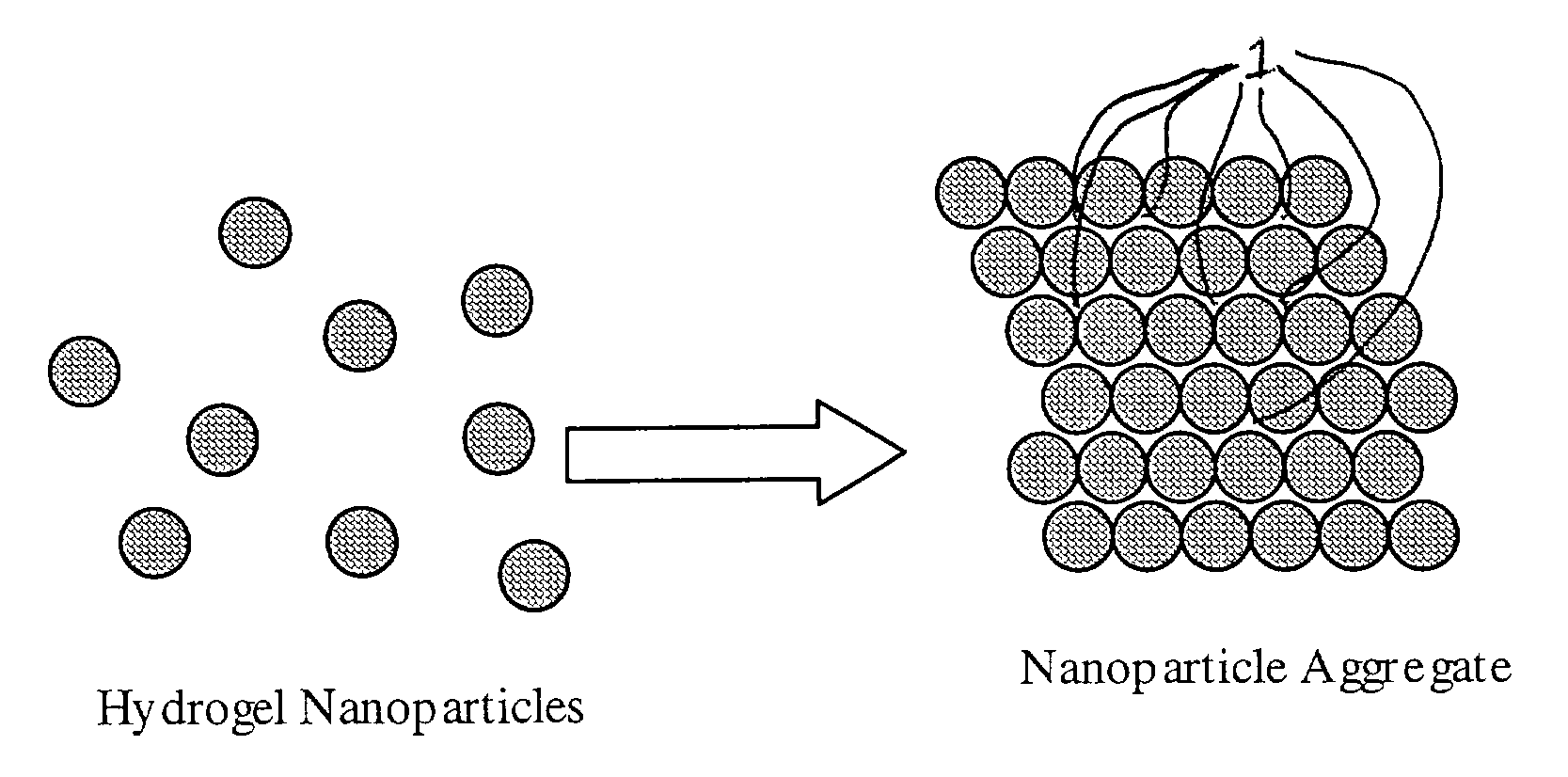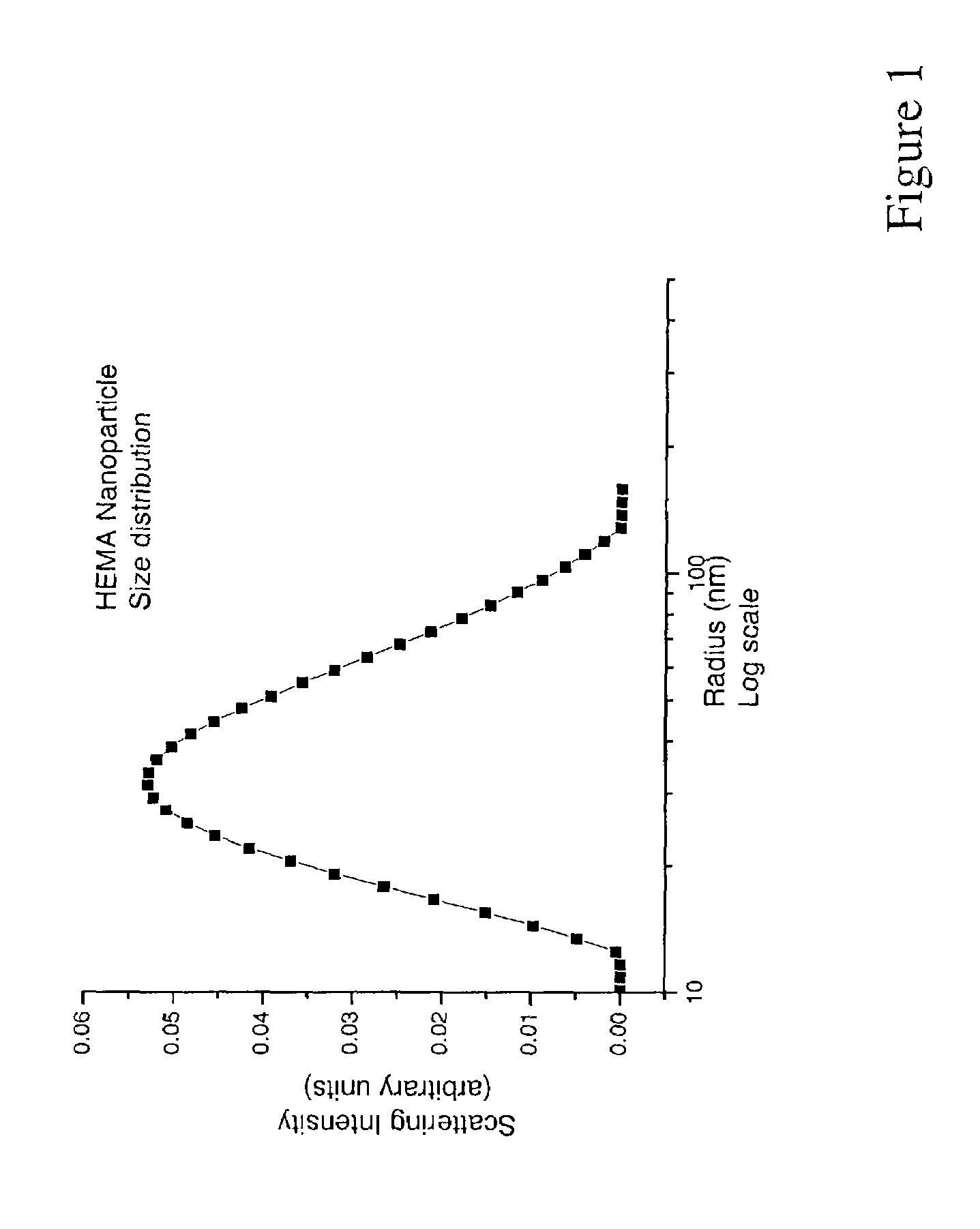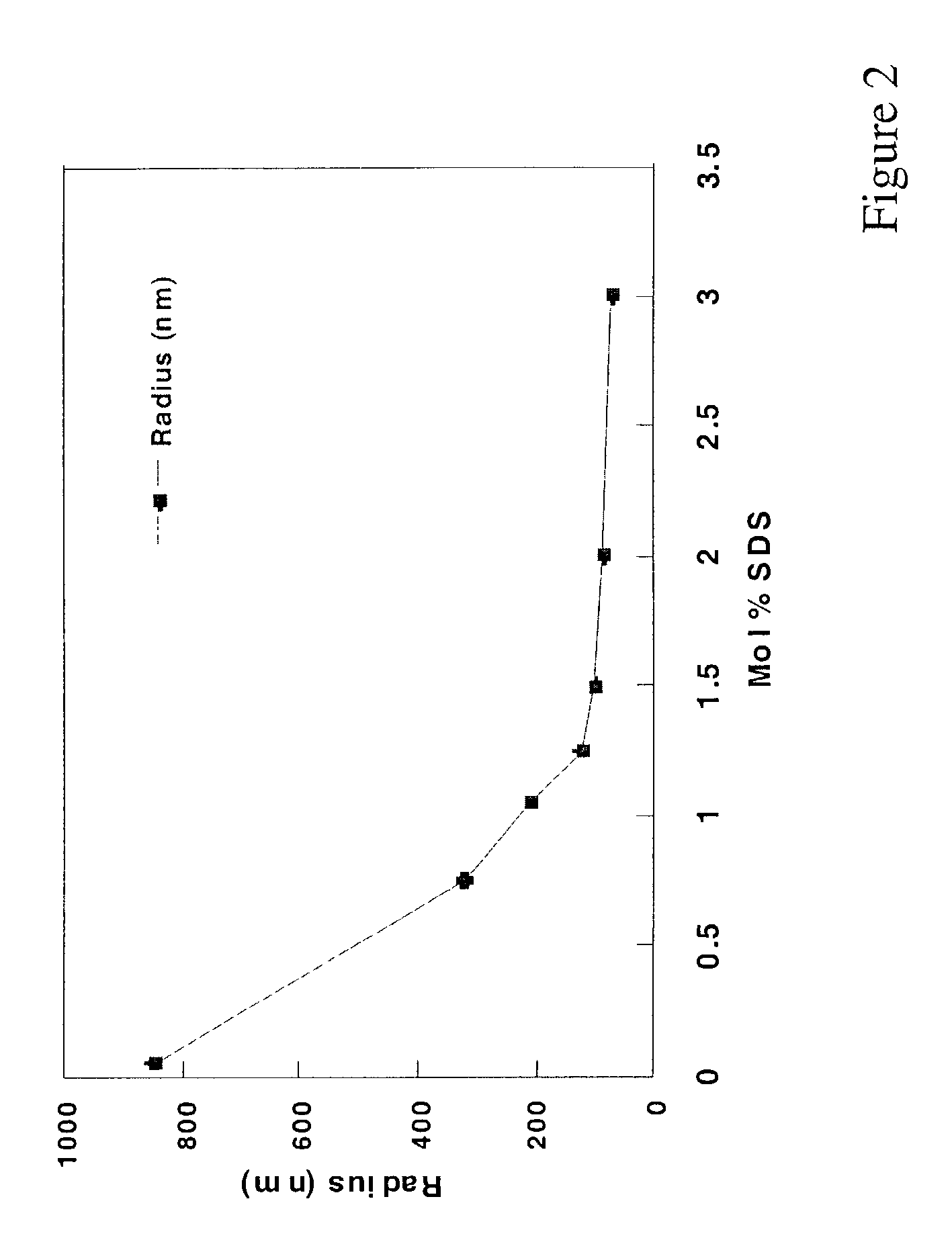Shape-retentive hydrogel particle aggregates and their uses
a hydrogel and aggregate technology, applied in the field of shape-retentive aggregates of hydrogel particles, can solve the problems of slow swelling rate of bulk hydrogels, poor control of bioactive substances, and use of particulate hydrogels,
- Summary
- Abstract
- Description
- Claims
- Application Information
AI Technical Summary
Benefits of technology
Problems solved by technology
Method used
Image
Examples
example 1
Preparation of Crosslinked HEMA Nanoparticles
[0135]A 500 mL media bottle equipped with a stir bar was charged with 4.52 g (34.8 mmol) HEMA monomer, 77.74 mg (0.428 mmol) ethylene glycol dimethacrylate (EGDM), 0.2123 g (0.634 mmol) sodium dodecyl sulfate (SDS) and 240 mL milli-Q H2O. The bottle was closed with a sparging cap and purged with N2 for 1 hr at room temperature while stirring. Then, 0.166 g K2S2O8 was dissolved into 21 mL of milli-Q H2O and added to the media bottle while stirring. The bottle was transferred to a 40° C. water bath and held there for 12 hours. The resulting suspension of hydrogel particles had an opalescent blue color. The particles were analyzed by dynamic light scattering and found to have an average radius of 36.5 nm as shown in FIG. 1. The particles were purified by tangential flow filtration and are stored in an aqueous suspension. No flocculation was observed over several months.
example 2
Size Variation of HEMA Nanoparticles
[0136]Following the procedure of Example 1, the ratio of monomers to surfactant was varied. An increase in the ratio of monomer to surfactant resulted in the formation of larger particles during polymerization as evidenced by laser light scattering. The size variation of HEMA particles with changes in mole percent SDS surfactant is shown in FIG. 2.
example 3
Incorporation of Co-Monomer in HEMA Nanoparticles
[0137]A 250 mL media bottle equipped with a stir bar was charged with 2.22 g (16.53 mmol) HEMA monomer, 74.9 mg (0.87 mmol) MM, 38.87 mg (0.214 mmol) ethylene glycol dimethacrylate (EGDM), 0.107 g (0.317 mmol) sodium dodecyl sulfate (SDS) and 120 mL milli-Q H2O. The bottle was closed with a sparging cap and purged with N2 for 1 hr at room temperature while stirring. Then, 0.083 g K2S2O8 was dissolved in 10.5 mL milli Q H2O and added to the media bottle while stirring. The bottle was transferred to a 40° C. water bath and left there for 12 hours. The particles that formed were purified by tangential flow filtration. Methacrylic acid was incorporated at 5,10, 20, and 30 mole percent of the total monomers and at different concentrations of sodium dodecyl sulfate. Table 1 shows the change in particle size with varying concentrations of methacrylic acid and varying buffer pH.
[0138]
TABLE 1Mole % MAAPH = 5pH = 7.4pH = 11 5 mol % MAA52.5 nm 6...
PUM
| Property | Measurement | Unit |
|---|---|---|
| Fraction | aaaaa | aaaaa |
| Diameter | aaaaa | aaaaa |
| Nanoscale particle size | aaaaa | aaaaa |
Abstract
Description
Claims
Application Information
 Login to View More
Login to View More - R&D
- Intellectual Property
- Life Sciences
- Materials
- Tech Scout
- Unparalleled Data Quality
- Higher Quality Content
- 60% Fewer Hallucinations
Browse by: Latest US Patents, China's latest patents, Technical Efficacy Thesaurus, Application Domain, Technology Topic, Popular Technical Reports.
© 2025 PatSnap. All rights reserved.Legal|Privacy policy|Modern Slavery Act Transparency Statement|Sitemap|About US| Contact US: help@patsnap.com



